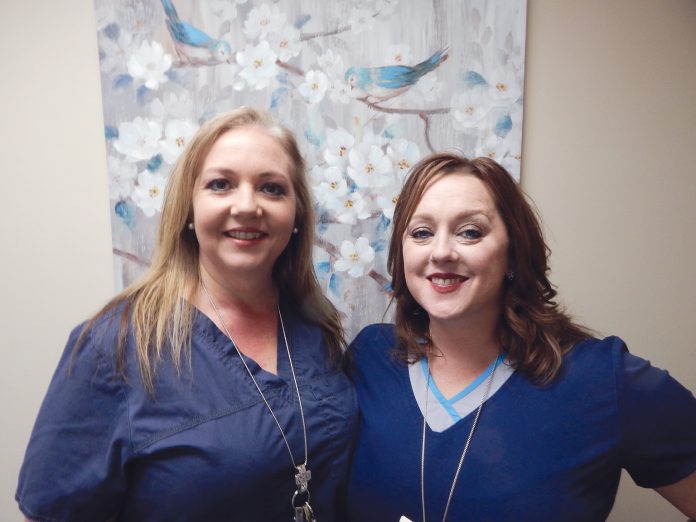
story and photo by James Coburn
The Valir PACE program based in Oklahoma City is a revolutionary approach to health care that allows services to transcend a bricks and mortar environment. Care is provided in a holistic and collaborative way with participants across all levels of care and across all environments.
“We target the lower socioeconomic patient 55 and above,” said Nicole Jones, RN, care coordinator, “Most of the patients we see, they haven’t had any health care or any health insurance for years, and so they come with a lot of comorbidities.”
The program provides social work and an adult day center for socialization and activities. PACE provides their medicine with the involvement of a doctor, nurse practitioner, physical therapy, speech therapy, occupational therapy with two warm meals a day, said Jones, a nurse for nearly 20 years.
After working in a hospital for many year, Jones first came to visit some friends on staff at PACE. She learned PACE has a lot to offer nurses.
She had helped patients become well at the hospital, but added that she did not get to impact change in their lives after they left the hospital.
“In this job you can directly affect change,” Jones said. “You develop a one-on-one personal relationship with the patient and their family. A lot of our patients call us every day and they say, ‘I love you.’ They call us angels.”
She enjoys establishing long-term relationships. Patients have entered the program unable to speak. They could say one or two words but today speak in full sentences. One man was blind in one eye. Now his vision has been restored, Jones said.
“It’s just people who haven’t had the resources to take care of themselves. So we are here and we do a little bit of everything,” Jones said.
This is the best nursing job that Jones has had in her career, she continued. The teamwork is not totally different than working in a hospital, said Jones who began at Valir a year and a half ago.
The Valir Pace program will have been opened two years in March, she added. She admires how willing the patients are to accept change.
“They come here and we become their doctors, their nurses; we become their insurance,” Jones explained. “So they have to commit to us as far as getting rid of all their former circle of physicians. And a lot of them are so tough — they’ve been through horrible times.”
“We’re here. And sometimes with the socialization alone, they’re able to make tremendous changes.”
Patients who were closed off as far as socialization have turned from hermits to social butterflies, she said. They became mentors for new patients arriving for the program.
“Our patients are amazing and our team is amazing. Everyone who works here is 100 percent committed,” she said.
Communication is helpful for success, said Sara Brickey, RN, care coordinator.
“We don’t have to go through all of the red tape that I did with my other jobs just to get a patient a wheelchair,” Brickey said. “Here if we meet as a team and the nursing and all and physician all agree that is what’s best for the patient and their health, then we order them a wheelchair they need.”
The process goes quickly, said Brickey, an RN for 10 years and graduate of Oklahoma City Community College.
“I’ve worked in a hospital. I’ve worked in a hospice and in home health — why I really came here is I feel this is really where I can serve the community in community health,” Brickey said. “We get to serve those people before they fall through the cracks, the ones I couldn’t find help when I was in other positions.”
Valir PACE accepts those patients and give them the therapy they need with the social work and entire circle of care, she said.
The staff works 150 percent, Brickey said, including the aides, LPNs, and activity coordinator. Each one loves and cares for the patients, Brickey said.
“We know we make a difference. Some days we have frustrating days. Sometimes there are hard days,” she said. But they remember the stories of their patients’ big wins.
“The little wins are big for us, too. We all just really try and remember those great days,” she said.
Brickey said she had a patient who wore dressings six years with his legs covered. He was able to get the physician care he needed and wound care three months ago.
“We were able to take those off and we have not gone backwards,” Brickey said. “His legs had not seen daylight or been free for six years and now he does not wear dressings anymore.”











